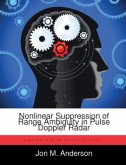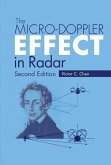In order to estimate the position and velocity of a target, most multistatic radar systems require multiple independent target measurements, such as angle-ofarrival, time-of-arrival, and Doppler information. Though inexpensive and reliable, Doppler-only systems have not been widely implemented due to the inherent nonlinear problem of determining a target's position and velocity from their measurements. We solve this problem. In particular, we first establish the lack of observability in the Doppler-only bistatic system, thereby demonstrating the need for multiple transmitters and/or receivers. Next, for a multistatic system with a sufficient number of transmitter-receiver pairs, we invoke classical optimization techniques, such as gradient-descent and Newton's method, to quickly and reliably find a numerical solution to the system of nonlinear Doppler equations. Finally, we indicate a best design for the transmitter-receiver constellation to be employed in the aforementioned optimization.
Hinweis: Dieser Artikel kann nur an eine deutsche Lieferadresse ausgeliefert werden.
Hinweis: Dieser Artikel kann nur an eine deutsche Lieferadresse ausgeliefert werden.








